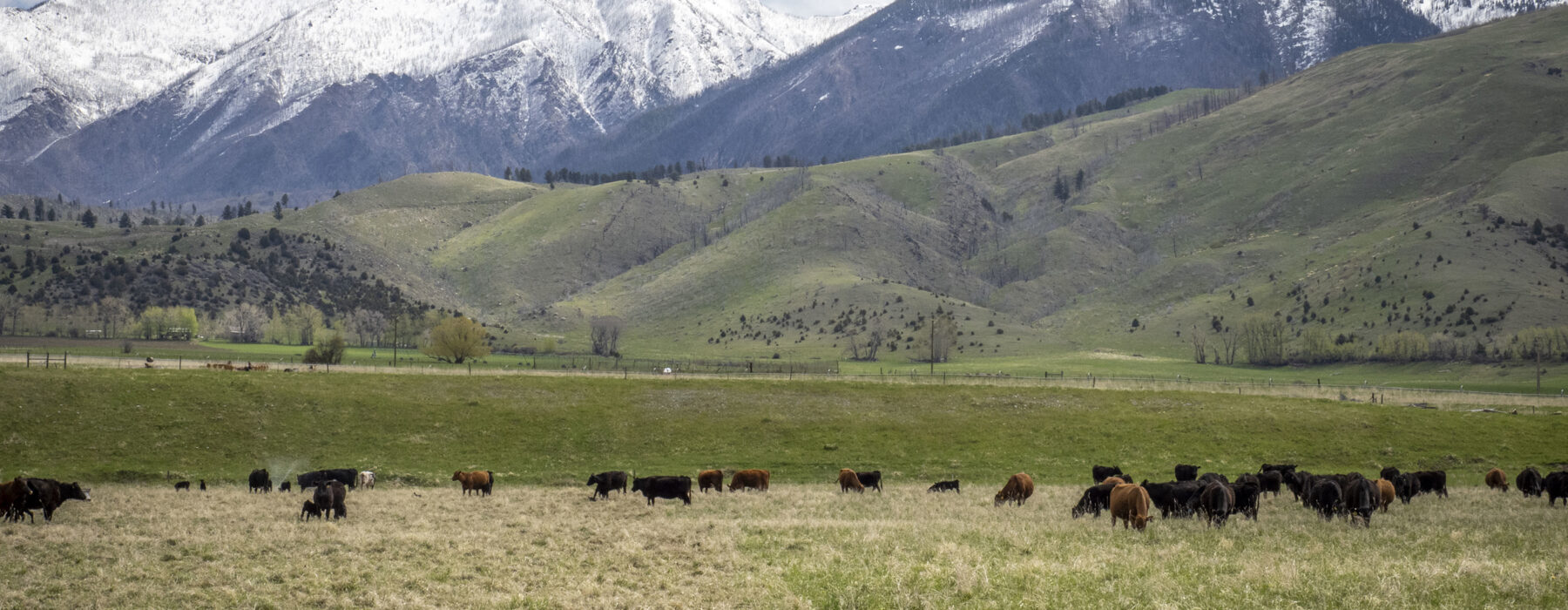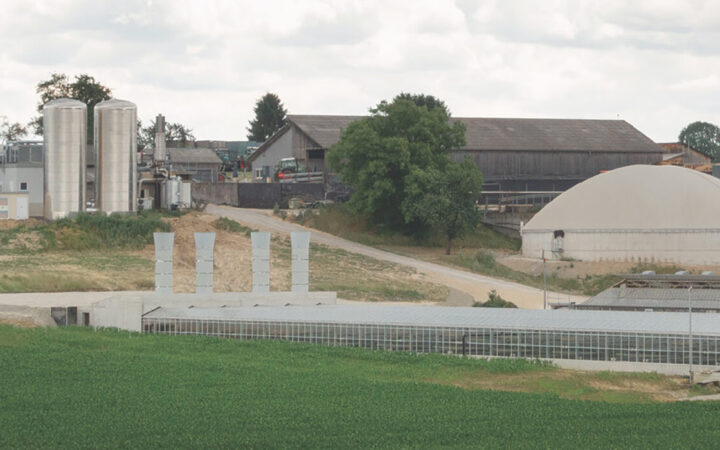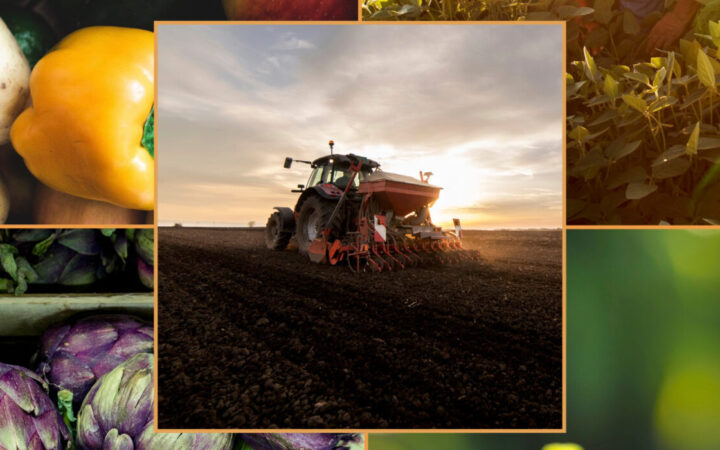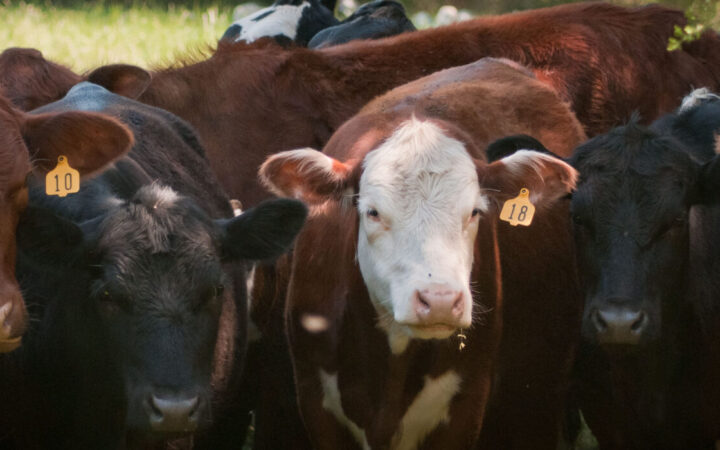This report explores how farm bill programs can be leveraged to encourage managed rotational grazing, a system of livestock management that is a more climate-friendly alternative to industrial forms of livestock production.
Introduction
Incentivized by state and federal laws and policies, US livestock production has become more consolidated, industrialized, and cost-efficient over the last several decades. Predominant forms of livestock management practices are extractive, degenerative, and unsustainable. Practices such as concentrated animal feeding operations (CAFOs) and continuous grazing systems require significant inputs of water, energy, land, and labor. At the same time, these practices release exorbitant waste and pollution into waterways and the atmosphere through runoff and greenhouse gas emissions.
Due in part to these impacts, the agricultural sector is one of the leading contributors to global climate change. Eleven percent of the total greenhouse gas emissions in the US are generated by agricultural practices—and nearly 80 percent of this amount is attributable to animal production alone in the form of feed production, continuous grazing, enteric fermentation, and manure management. Most livestock raised in the US for meat, dairy, and eggs are held in CAFOs, which contribute to environmental and public health impacts. These impacts include degraded soil, air, and water quality; increases in asthma, gastrointestinal disease, and other environmental injustices for neighboring communities which are often low-income and communities of color; and aquatic and wildlife habitat reduction.
The 2022 Intergovernmental Panel on Climate Change report on Impacts, Adaptation and Vulnerability emphasizes the need to strengthen local and regional food and agriculture systems to mitigate and reverse these impacts and better withstand the shocks and stressors caused by an increasingly changing climate. Critically, resilient food systems are needed to improve the livelihoods of those most impacted by climate change, including low-income households, Black, Indigenous, and other people of color (BIPOC) small-scale producers and fishing communities, and people living in high-risk regions.
Transitioning away from industrial forms of livestock management that exacerbate climate change, degrade the environment, and adversely affect the health of frontline communities requires broad policy reform. Many small-scale livestock farmers and ranchers are at the forefront in experiencing the earliest effects of climate change. Yet, current US systems, structures, and policies do not sufficiently incentivize or invest in small-scale livestock operations and agricultural practices that promote climate and food system resilience, such as managed rotational grazing (MRG). Instead, the private agricultural sector continues to lobby for large-scale, consolidated, industrial forms of livestock management, which are heavily incentivized by US food, nutrition, and agriculture policy. In fact, major companies in the meat and dairy industry have explicitly lobbied against climate and environmental legislation in order to maintain federal subsidies in place that support harmful practices such as CAFOs.
Farmers and ranchers need direct, comprehensive, and long-term financial and technical support to shift from the predominant forms of livestock management. While the farm bill is one of many pieces of legislation that support industrial agricultural production practices, it can be strategically leveraged by states to better support small-scale farmers, ranchers, and grazers transitioning toward more sustainable and resilient forms of livestock management and grazing systems.
The Biden Administration’s Climate, Agriculture, and Racial Equity Priorities
Fighting climate change while advancing racial equity and conserving US land and water is a priority for the Biden Administration, as outlined in the following actions:
- 2021 Executive Order 14008 on “Tackling the Climate Crisis at Home and Abroad”
- 2021 Executive Order 13985 on “Advancing Racial Equity and Support for Underserved Communities Through the Federal Government” with an aim to broadly influence federal programs, processes, and funding allocation
- The “America the Beautiful” 30×30 mandate “to conserve, connect, and restore 30 percent of our lands and waters by 2030 for the sake of our economy, our health, and our well-being”
Additionally, President Biden’s 2021 Executive Order 14036 entitled “Promoting Competition in the American Economy” named agriculture as an industry that has been negatively impacted by extreme consolidation. Indeed, just four companies own the majority of all processing in each of the beef, pork, and chicken industries in the US. Among its directives, EO 14036 directs USDA to consider new rules under the Packers and Stockyards Act—the law governing livestock operations—to better protect farmer and rancher interests.
A recent investment in agriculture conservation and climate change mitigation, the Inflation Reduction Act of 2022 allocates $38 billion to agricultural conservation, agricultural credit, renewable energy, and forestry programs over a 10-year period. Agricultural conservation programs, including those that support managed grazing systems, will receive $19.5 billion over fiscal years 2022–2031. To achieve the goals outlined in the 30×30 mandate and Bidens’ Executive Orders, policymakers, researchers, advocates, and farmers alike will need to continue to invest in pathways for transitioning toward more regenerative and resilient agricultural systems.
This report considers how improvements to farm bill conservation program access, structure, and incentives can increase the number of farmers, ranchers, and other land managers using MRG systems as an adaptive tool for building climate resilience.
Acknowledgements
This report was produced by the Center for Agriculture and Food Systems (CAFS) at Vermont Law and Graduate School and is funded by the National Agricultural Library, Agricultural Research Service, US Department of Agriculture. Contributors to this report from CAFS include Laurie Beyranevand, Claire Child, Lihlani Nelson, and Emily Spiegel.
CAFS thanks the following people for reviewing the report and providing edits and feedback: Cathy Day (Climate Policy Coordinator, National Sustainable Agriculture Coalition), Pete Huff (Co-Director, Wallace Center), Erin Lowe (Postdoctoral researcher, University of Wisconsin–Madison), and Jesse Womack (Policy Specialist, National Sustainable Agriculture Coalition). Special thanks to Adena Rissman and her colleagues at the Department of Forest and Wildlife Ecology at the University of Wisconsin–Madison for sharing prepublished findings on their review of grassland and managed grazing policy in the Midwest. Reviewers do not necessarily endorse any specific report recommendations.
Suggested Citation
Jenileigh Harris, Vt. L. & Grad. Sch. Ctr. for Agric. and Food Sys., Managed Rotational Grazing Policies: An Overview of Farm Bill Programs to Support Regenerative Agriculture (2023), https://www.vermontlaw.edu/sites/default/files/2023-01/Managed-Rotational-Grazing.pdf.





